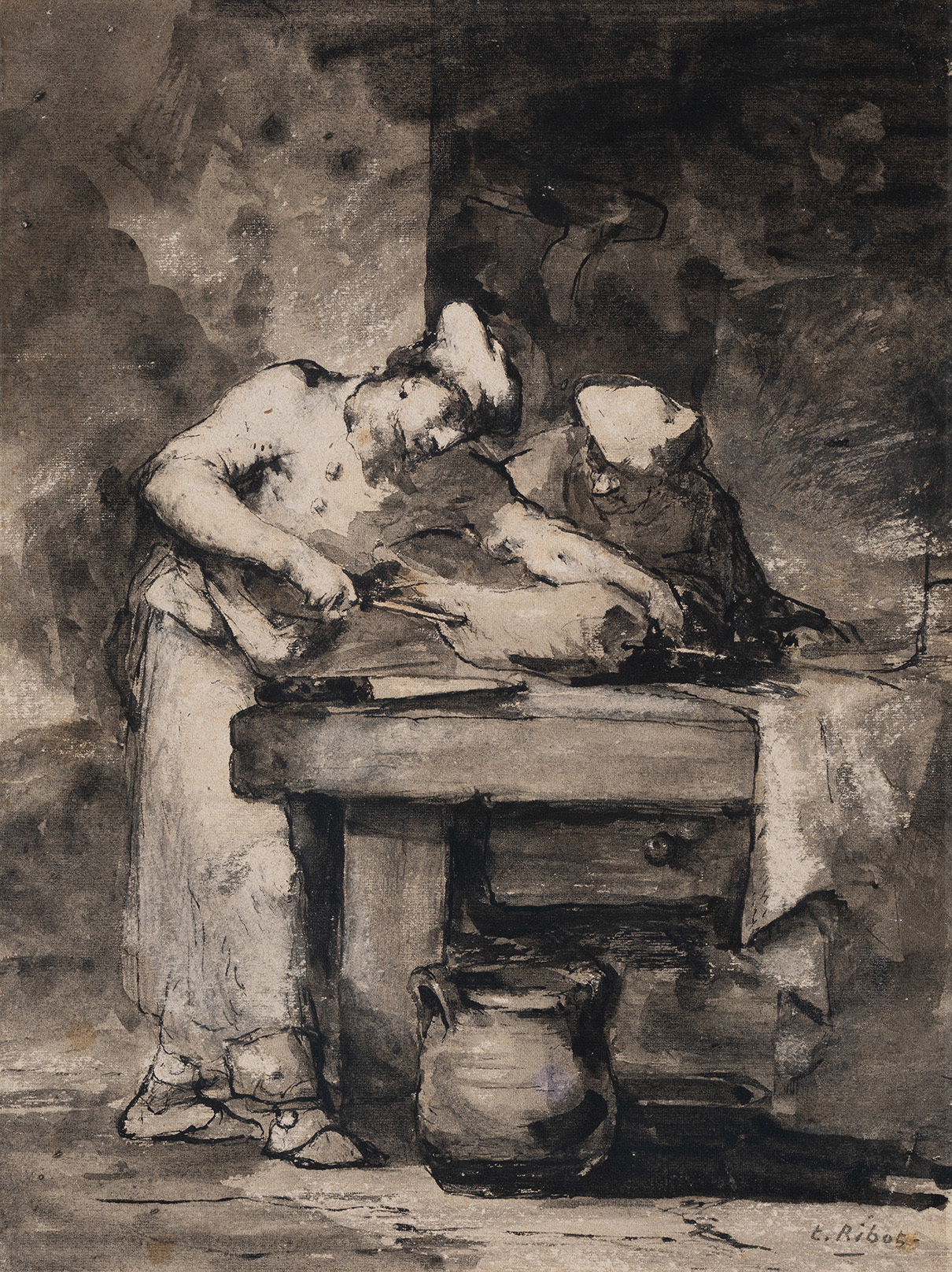One of the most important strands of Théodule Ribot’s œuvre is his genre scenes, which celebrate everyday life and the honour of humble professions. From the 1860s onwards, genre painting gained a central place at the Salon, and Ribot actively contributed to this development. His depictions of cooks, seamstresses, and craftsmen convey a profound respect for manual labour, presented without embellishment or idealisation.
Our drawing portrays two cooks wholly absorbed in their task of cutting a large piece of meat. Their concentrated gestures and almost solemn expressions underline the seriousness of their work. Executed in ink and wash, the composition is monochromatic, its restrained means reinforcing the intensity of the moment. Far from being a casual sketch, this drawing exemplifies Ribot’s ability to merge the immediacy of genre scenes with the dignity of portraiture, transforming a simple kitchen task into a meditation on labour.
The austerity of the medium and the expressive force of the figures also recall Ribot’s admiration for the graphic work of Rembrandt and Goya, whose chiaroscuro, grey wash, and psychological intensity find an echo here.
